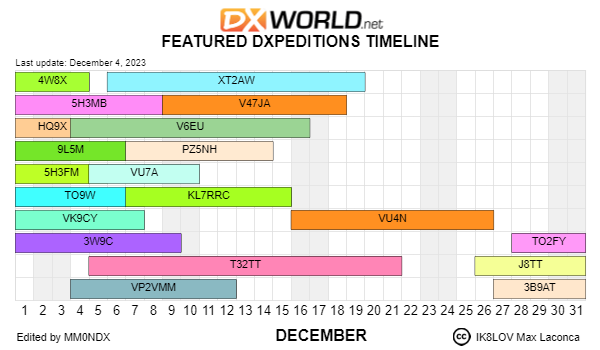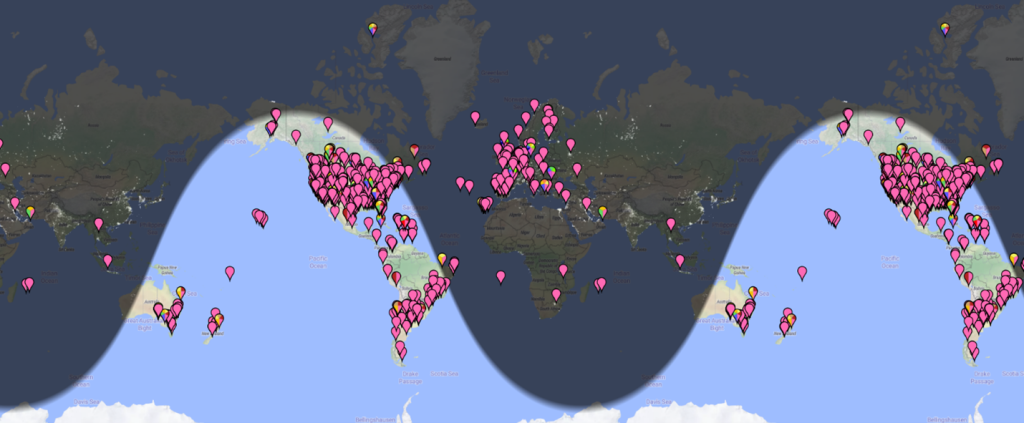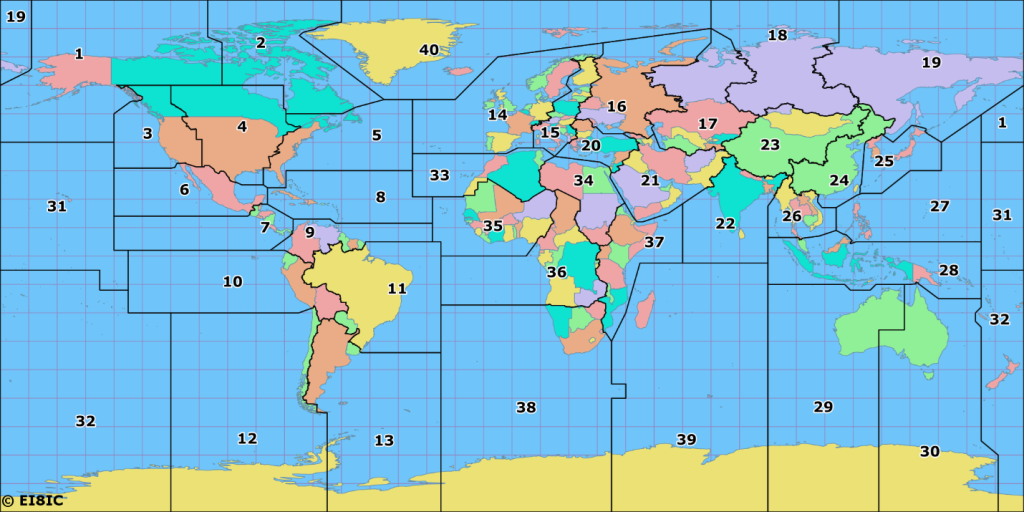Congratulations! You’ve finally logged and confirmed country number 100, joining the ranks of radio amateurs who have gained DX Century Club status. This is a great achievement, and you should be proud.
The ARRL DXCC’s long history as a premier award program makes it especially attractive for new and experienced hams alike. (I am focusing on the ARRL’s DXCC award, but there are other “100” awards, too, such as the CQ DX Award. They are structured similarly.)
But look at all the upcoming expeditions and contests and places on the ARRL DXCC List. I bet you won’t celebrate too long before thinking, “Now what? What’s next?” Having “been there,” I will give you some ideas—sticking closely to DXing activities—to think about for the days, weeks, and even years ahead.
Onward DXCC
The most obvious “next step” is to add more countries (“entities” in DXCC-speak) to your logbook. How did you get those first 100? Tuning through the bands on any mode probably allowed you to make pretty rapid progress toward that first 100. But then the All-Time New Ones (ATNOs) start becoming a little harder to find, and the pileups start getting a little bigger! Don’t worry because this is the way we all started, listening for that “DX sound” and looking up unfamiliar prefixes, then crossing off that country on a printed list of all 340 DXCC entities.
As you increase your DXCC totals, you can add endorsement stickers to your paper certificate at different levels. Stickers are provided in multiples of 50 (i.e., 150, 200) between 100 and 250 DXCC credits, in multiples of 25 between 250 and 300, and in multiples of 5 above 300 DXCC credits. Believe me, those final stickers up to the Honor Roll level (currently 331 entities) are highly sought after!
How Did the Original DXCC Program Get Its Start?
In the 1930s, a first major award for contacting distant stations (abbreviated “DX”) was Worked All Continents (WAC). Many amateurs found that pretty challenging with the equipment of the day, but soon, hams were thinking bigger and keeping lists of the many places they had contacted. In 1935, an article by Clinton B. DeSoto in QST laid out the basics of an award that went much further than the six continents required by the WAC program. (DeSoto also wrote 200 Meters and Down, describing the early days of ham radio—an excellent book!) It evolved into the post-WW2 DXCC program. As amateurs returned to the air with new and war-surplus equipment much improved over the pre-war gear (imagine—coaxial cable was new!), country totals soared, and the race was on!

Today’s DXing Resources
To get your totals going up, up, up you need to know what stations are on the air, on what frequencies, and when they are active. The less-common countries are not on the air every day, so it’s not just a matter of tuning one in and giving your call sign. You’ll need to take advantage of the many resources available that help connect the DXer and the DX so you can be in the right place at the right time.
The best resources are online. One of the most widely visited, DX-World, is a website managed by Col, MMØNDX, that provides all kinds of information about stations that will be or are active. A weekly summary of news is available in the free bulletins by Bjorn, ON9CFG. News about upcoming and ongoing DXpeditions is posted on the home page, as well as a handy timeline (shown in the graphic) to help you plan being on the air at the right time.
Another popular newsletter that comes out every day is the Daily DX, edited by Bernie, W3UR. It includes announcements of upcoming operations, when and where stations have been heard and worked, propagation predictions, and more. It even has an IOTA (Islands On the Air) section dedicated to that award program.
The spotting networks are your next stop. A “spot” is the combination of station call sign, date, time, frequency, and other information. The spots are posted online on a website or routed directly to your logging software. (By the way—if you’re not already doing so, save yourself a lot of effort and use logging software that automatically tracks your progress for all kinds of awards and even prints out the necessary forms and reports.) Two of the best-known spotting sites are dxsummit.fi and dxwatch.com.

If you prefer graphics, the digital modes are the specialty of PSKReporter (10 meter reception reports are shown on the afternoon of December 4, 2023 on the map). DXMaps.com also shows contacts being reported on the HF, VHF, and UHF bands.
Regardless of how you get the information, you’ll want to be sure you have the right country and other information for a station, especially those with “interesting” call signs. For example, it’s common for stations operating temporarily on French islands to be assigned a TO– prefix. Let’s say you hear TO9W (a currently active station in early December 2023). Where is that station? It might be anywhere from French Polynesia, to the French Indian Ocean islands, to the Caribbean. Luckily for us DXers, Jim, AD1C, maintains the CTY or “country file” containing the necessary information. Here’s a sample:
St. Martin: 08: 11: NA: 18.08: 63.03: 4.0: FS:
FS,=TO0A,=TO1E,=TO1K,=TO2EME,=TO4X,=TO5D,=TO5M,=TO5SM,=TO5SM/P,=TO5T,=TO9PL,=TO9W;
The first line shows the location name, CQ Zone, ITU Zone, CQ Continent, Latitude, Longitude, Hours Offset from UTC, and the ITU-assigned prefix, which is FS for St. Martin. The second line is a list of station call signs known to be active from St. Martin. TO9W turns out to be a station operating from St. Martin.
Your logging software may use the CTY file as its reference for identifying each station’s award status, so be sure you keep the most current version on your computer.
Single- and Multi-Band Awards
Aside from adding ATNOs to your DXCC totals, there are lots of other options to keep you busy. I’ll bet you have a “favorite” band on which your antenna system just seems to work best. Or maybe it suits your schedule for operating, open when you are! The DXCC program offers single-band “endorsements” for all of the amateur bands from 160 meters through 3 centimeters. (60 meters is excluded because our access to that band is not yet permanent, although the FCC is evaluating a permanent allocation.)
There is no better way to “learn a band” than to make it your primary band for an extended period. Even “doing single-band” during a weekend contest is a great way to learn. You’ll experience the excitement of stations popping up as the band opens, including unexpected long-path propagation. You’ll observe the effects of solar illumination throughout the day on the higher-frequency bands and then see the opening follow the Sun to the west. On the lower-frequency HF bands, the opposite sequence occurs. Bands “in the middle” like 30, 20, and 17 meters can be open to somewhere around the world on a 24-hour basis. With the solar cycle near its peak, why not keep your radio on 12 or 10 meters? There are a lot of stations on these bands doing the same thing, and you may contact a DXCC’s worth quicker than you expect!
If you’re concentrating on the one band, stretch your abilities to operate on all three types of modes: Code, Phone, and Digital. (Mixed Mode is the most popular for one’s initial DXCC award.) Most contests have single-band categories, too. There are even single-band contests, like the ARRL’s 160 Meter and 10 Meter contests that just completed in early December. There is no better way to learn a new mode than to jump into it for a contest.
DXCC (and Worked All States or WAS) offer a multi-band award, too. This ambitious target is known as 5BDXCC. It’s available for making DXCC on 80, 40, 20, 15, and 10 meters. You don’t have to work each station on all five bands. The one hundred contacts can be with all sorts of different stations. Once you achieve 5BDXCC you can also get endorsements for 160, 30, 17, 12, 6, and 2 meters.
Pursuing the DXCC Challenge
From the ARRL website, “The DXCC Challenge Award is available for working and confirming at least 1,000 DXCC band-entities on any Amateur bands, 160 through 6 meters (except 60 meters). The Challenge award is presented to the top three leaders as of the 31st of December each year. Plaques can be endorsed, using medallions, in increments of 500 entities and are totaled to give the Challenge standing…QSOs for the 160, 80, 40, 30, 20, 17, 15, 12, 10 and 6 meter bands qualify for this award.” This award is a lifetime total and the top stations have exceeded 3,000 band-entities! As you keep chasing DX, don’t forget to keep track of your DXCC Challenge totals, too!
WAZ
As you work DX, you’ll soon become aware of another popular DX award that you can chase right along with the various flavors of DXCC. That is the CQ Worked All Zones (WAZ) award, sponsored by CQ magazine. For this award, the world has been divided into 40 different zones, as shown in the map below. (The map is available from Mapability, an excellent resource created by Tim, EI8IC.)
Like DXCC, WAZ is obtained by contacting all 40 zones on any combination of bands. For the truly motivated, a 5BWAZ is also offered—getting all 40 zones on 10 meters or 80 meters requires real effort. Some zones, like 34, 36 or 39, can be “politically” difficult because there aren’t many stations active there. But if you are persistent…and lucky…you’ll eventually have that elusive “last one” in your log!

Logbook of The World—LoTW
Speaking of logs, you’ll need to start thinking about how you’re going to get all of these contacts confirmed. It wasn’t so long ago that most DX contact confirmations required the exchange of paper QSL cards either directly, via a QSL manager, or through the QSL Bureau system. Now I really enjoy getting paper cards in the mail. A package from the QSL Bureau (aka “via buro”) means ALL STOP at my house—because many are beautiful four-color print masterpieces with the individual’s handwritten signature. But it’s expensive to send all of those cards by mail.
You should sign up for the ARRL’s Logbook of The World (LoTW) program and upload your logs to the system, which contains more than 1,000,000,000 (billion!) contacts dating back to the 1930s and 1940s. Registration is not difficult—there are easy-to-follow instructions on the web page, and ARRL staff will help you if you get stuck. ARRL membership is not required, although this is an excellent benefit of joining the organization. Once the necessary software is installed and you have obtained the digital certificate for your call sign, uploading a contest log or even a single QSO’s information is very easy. Your logging software can probably automate the process. Confirming a contact costs a small fraction of what direct mail costs and is a whole lot faster. I will always have paper QSL cards available to send on request, especially for a “first QSO” with a DX station, but I am also a big fan of confirmations “at the speed of light!”
Get On the Air
I hope I’ve given you a few ideas for taking your next steps in the world of DXCC and other DX awards. As your skills and station capabilities improve, you can also make progress in programs like Parks On the Air (POTA), Summits On the Air (SOTA), and Islands On the Air (IOTA). Do you notice a theme? It’s “On The Air”! OTA is the key to any kind of operating success and skill. The more you operate, the better you will get and the more radio know-how you will acquire. Going back to the very beginning, that was the whole point of operating awards like DXCC—to make you a better radio amateur. See you in the pileups!

